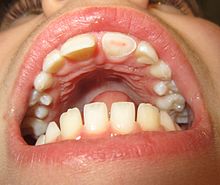We use cookies to help you navigate efficiently and perform certain functions. You will find detailed information about all cookies under each consent category below.
The cookies that are categorised as "Necessary" are stored on your browser as they are essential for enabling the basic functionalities of the site. ...
Necessary cookies are required to enable the basic features of this site, such as providing secure log-in or adjusting your consent preferences. These cookies do not store any personally identifiable data.
Functional cookies help perform certain functionalities like sharing the content of the website on social media platforms, collecting feedback, and other third-party features.
Analytical cookies are used to understand how visitors interact with the website. These cookies help provide information on metrics such as the number of visitors, bounce rate, traffic source, etc.
Performance cookies are used to understand and analyze the key performance indexes of the website which helps in delivering a better user experience for the visitors.
Advertisement cookies are used to provide visitors with customised advertisements based on the pages you visited previously and to analyze the effectiveness of the ad campaigns.
Types and Characteristics of Dental Trauma
- Dental trauma refers to injury to the teeth, periodontium, and nearby soft tissues.
- There are five types of alveolar fractures, including fractures of the socket wall, dentoalveolar fractures, and fractures of the maxilla and mandible.
- Soft tissue lacerations commonly occur in the lips and gingivae.
- Trauma to primary teeth is common in young children and can lead to complications such as enamel hypoplasia and root resorption.
Prevention and Awareness of Dental Trauma
- Regular use of a gum shield during sports and high-risk activities is the most effective prevention for dental trauma.
- Compliance with regular use of mouthguards is low in high-risk populations.
- Awareness and knowledge of dental first-aid among amateur boxers is important.
- Oral and dental complications of intra-oral piercing should be considered.
Management and Treatment of Dental Trauma
- The management of dental trauma depends on the type of injury and whether it involves a baby or adult tooth.
- Splinting may be necessary to hold a loose tooth in the correct position for healing.
- Avulsed permanent teeth should be rinsed and replanted if possible, or stored in a suitable solution.
- Pulp necrosis, root resorption, and pulpal obliteration are potential complications of dental trauma.
Complications and Consequences of Dental Trauma
- Pulp necrosis is the most common complication of dental trauma, characterised by gray color and periapical inflammation.
- Root resorption can occur after traumatic dental injuries, both along the root surface and within the root canal.
- Pulpal obliteration, characterised by loss of pulpal space and yellow discoloration, may not require treatment if asymptomatic.
- Damage to successor teeth is a potential consequence of trauma to primary teeth.
Research and Studies on Dental Trauma
- Epidemiological studies have shown a high prevalence of traumatic dental injuries, especially in children and adolescents.
- Different types of traumatic dental injuries, such as fractures, luxations, and avulsions, require specific management approaches.
- Traumatic dental injuries can lead to short-term consequences such as pain and swelling, as well as long-term consequences like pulp necrosis and esthetic problems.
- Treatment options for dental trauma include bonding, veneers, crowns, repositioning, and replantation of avulsed teeth.
- Implementing preventive measures, such as the use of mouthguards, can help reduce the incidence of dental trauma.
Dental trauma refers to trauma (injury) to the teeth and/or periodontium (gums, periodontal ligament, alveolar bone), and nearby soft tissues such as the lips, tongue, etc. The study of dental trauma is called dental traumatology.
| Dental trauma | |
|---|---|
 | |
| A broken upper front tooth. The layers of tissue that make up the tooth are clearly visible, with the pink pulp standing out against the paler dentine and tooth enamel. | |
| Specialty | Oral and maxillofacial surgery |